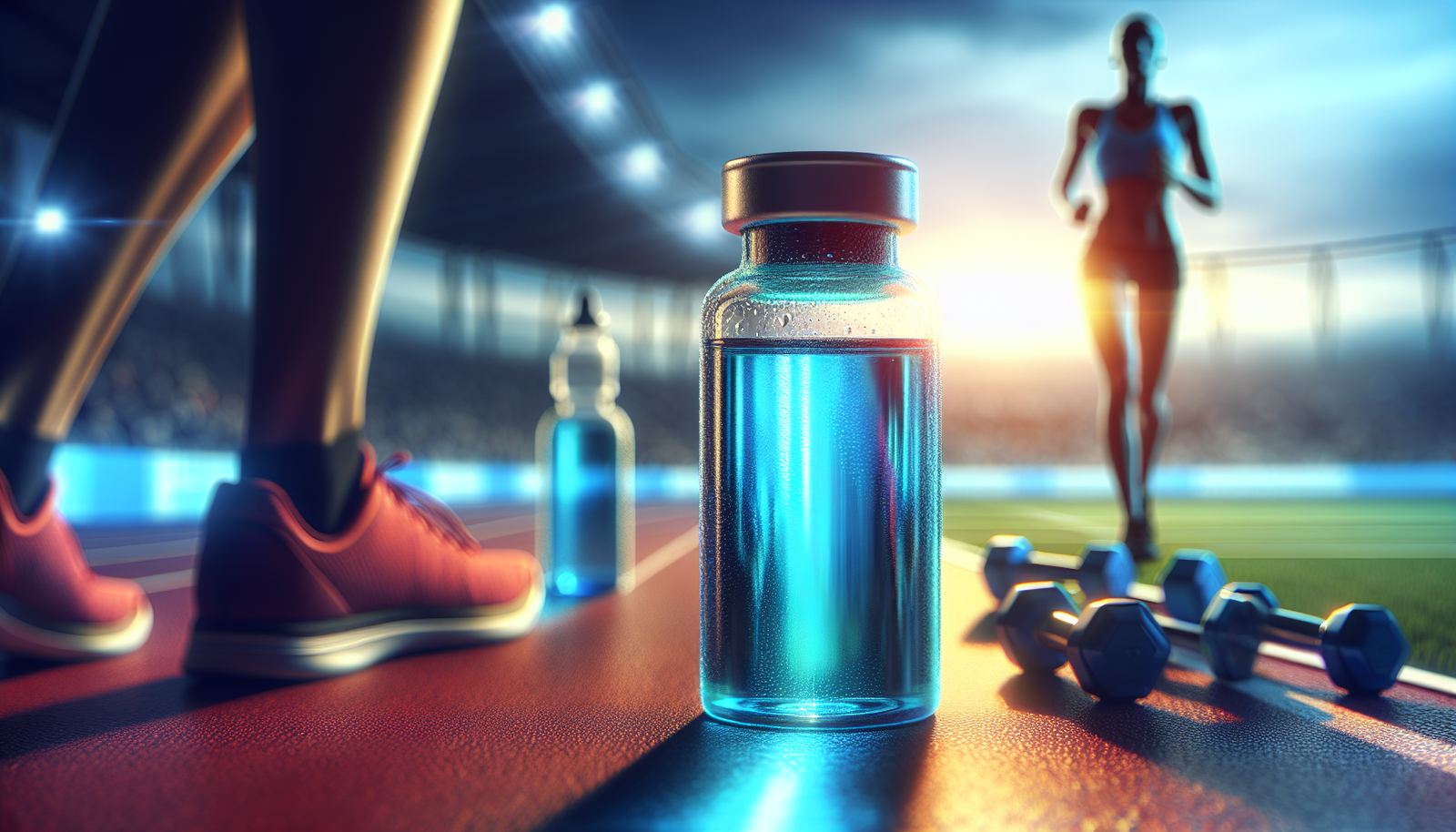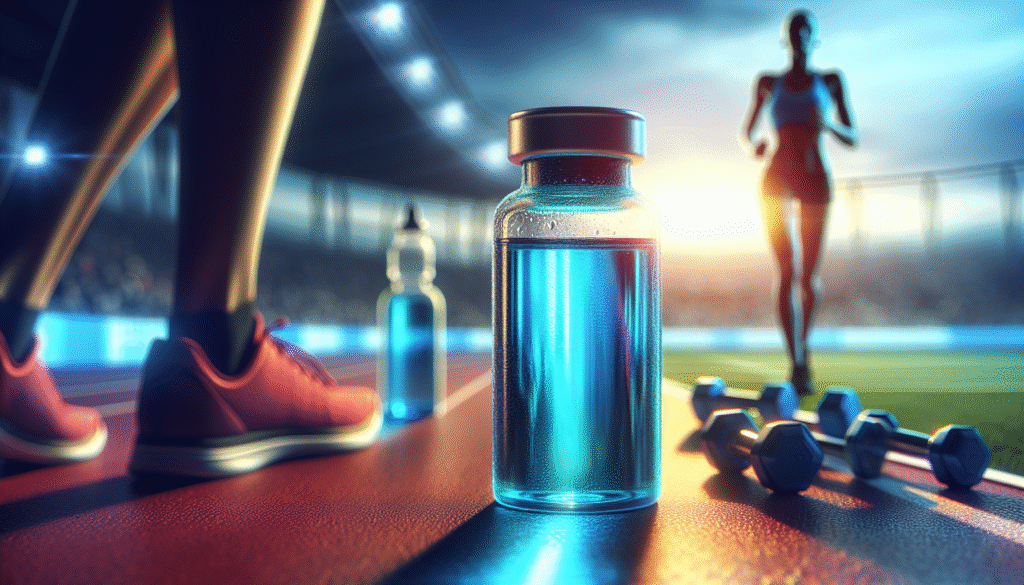
Have you ever considered how a single compound could significantly enhance athletic performance? The conversation around performance-enhancing substances often revolves around steroids or energy drinks. However, one lesser-known compound that has garnered attention in recent years is methylene blue. This article delves into how methylene blue may serve as a valuable asset to athletes looking to optimize performance.

What is Methylene Blue?
Methylene blue is a synthetic dye that has historically been used in various medical applications, including as a treatment for methemoglobinemia and as an antiseptic. Its unique properties have started to attract interest within the athletic community. Athletes are continuously on the lookout for substances that can enhance their performance and recovery, and methylene blue presents a fascinating option.
Chemical Composition
Methylene blue, or methylthioninium chloride, is a thiazine dye that has a distinctive blue color. Its molecular structure allows it to interact with a variety of biological systems. Biochemically, it is known to act as a redox agent and influences several metabolic pathways. This characterization of methylene blue is vital to understanding its potential benefits for athletes.
Historical Context
Historically, methylene blue has been used in various medical treatments, but its implications for sports and performance enhancement remain relatively novel. Although it has been researched extensively within the realms of medicine and biology, its popularity among athletes is still emerging. This indicates a need for further exploration and understanding of its applications in this context.
Mechanism of Action
Understanding the mechanism by which methylene blue operates reveals why it may benefit athletic performance. The compound is primarily known for its role in enhancing cellular respiration and energy metabolism.
Enhancing Mitochondrial Function
Mitochondria serve as the powerhouses of cells, responsible for producing adenosine triphosphate (ATP), the primary energy currency in your body. Methylene blue can enhance mitochondrial function by improving the efficiency of ATP production. This improvement is vital for athletes who rely on optimal energy output.
Antioxidant Properties
Methylene blue holds antioxidant capabilities that can help combat oxidative stress, a common issue faced by athletes undergoing rigorous training. By neutralizing free radicals, methylene blue may reduce muscle fatigue and support recovery after intensive workouts.
Neuroprotective Effects
Not only does methylene blue benefit physical performance, but it may also improve cognitive function during athletic activities. Enhanced mental clarity and focus can be crucial for athletes who require concentration and strategic thinking in competitive settings.
Benefits of Methylene Blue for Athletes
Having outlined its mechanisms of action, it’s time to explore the specific benefits methylene blue can offer athletes.
Improved Endurance
For endurance athletes, even marginal improvements can make a significant difference in performance. Research indicates that methylene blue may enhance oxygen utilization, allowing your body to perform more efficiently during prolonged activities.
Faster Recovery Times
Recovery is a critical aspect of any training regimen. With methylene blue’s potential antioxidant effects, it can help reduce exercise-induced oxidative stress, thus leading to quicker recovery times post-exercise. Faster recovery allows you to train harder and more frequently.
Enhanced Cognitive Performance
Mental fatigue can be a detrimental factor during competitions. Methylene blue’s neuroprotective properties can improve cognitive function, helping you maintain focus and decision-making capabilities when it matters most.
Effects on Muscle Fatigue
Muscle fatigue can hinder performance during workouts. Methylene blue appears to mitigate muscle fatigue by enhancing cellular oxygen consumption and reducing lactic acid buildup. This may be particularly beneficial during high-intensity workouts.
Scientific Research and Evidence
Methylene blue may have numerous purported benefits for athletes, but the question remains: what does the scientific literature say about these claims? Citing studies can lend credibility to the efficacy of this compound.
Animal Studies
Several animal-based studies indicate that methylene blue enhances exercise capacity and endurance. In controlled settings, rodents treated with methylene blue showed a marked improvement in running distances on treadmills, suggesting its potential for increasing athletic performance.
Human Studies
Research on human subjects is limited but growing. Early studies have shown promising results regarding enhanced performance metrics, particularly during aerobic activities. While further research is needed, initial findings suggest methylene blue’s positive effects on physical performance and recovery.
| Study Type | Findings | Outcome |
|---|---|---|
| Animal Study | Increased endurance and exercise capacity in rodents | Positive |
| Human Study | Improved time to exhaustion in trained athletes | Positive |
| Pilot Studies | Potential benefits for oxidative stress reduction | Positive |

Dosage and Administration
Understanding the appropriate dosage and method of administration of methylene blue is essential for safety and efficacy.
Recommended Dosage
While there is no universally accepted dosage for athletes, many studies suggest a range between 0.5 to 4 mg/kg of body weight. It is crucial to consider that individual responses may vary, so beginning with a lower dosage and gradually increasing it while monitoring effects is advisable.
Administration Methods
Methylene blue can be taken in several forms, including tablets, intravenous infusion, or as a solution. Each method has its advantages and disadvantages, but oral administration is the most convenient for athletes.
Safety and Side Effects
It is essential to weigh the potential benefits against any risks. While methylene blue is generally regarded as safe within the suggested dosages, side effects such as gastrointestinal discomfort, skin reactions, and urine discoloration can occur. Consulting a healthcare professional before starting any new supplement is always recommended.
Legal Status in Sports
Athletes must be aware of the legal implications of using methylene blue in competitive sports. The World Anti-Doping Agency (WADA) maintains a list of prohibited substances. Understanding the legal standing of methylene blue within your sport is crucial to avoid disciplinary actions or suspensions.
Prohibited or Permitted?
Currently, methylene blue is not listed as a prohibited substance by WADA. However, rules can change, so it is advisable to stay informed and consult relevant regulatory bodies or governing organizations.

Potential Risks and Considerations
While methylene blue presents various potential benefits, it’s crucial to consider the possible risks associated with its use.
Interaction with Medications
Methylene blue can interact with other medications, particularly antidepressants known as monoamine oxidase inhibitors (MAOIs). This interaction can lead to serotonin syndrome, a potentially life-threatening condition.
Pre-existing Conditions
Individuals with certain medical conditions, such as kidney disorders, should exercise caution or avoid methylene blue altogether. If you have any pre-existing health issues, consulting a healthcare professional prior to use is critical.
Individual Responses
Individual reactions to methylene blue can vary greatly. Not every athlete will experience the same benefits, and monitoring your body’s response is vital during any supplementation regimen.
Conclusion
Methylene blue is a compound that may be underappreciated in the athletic community. With the potential to enhance endurance, speed recovery, and improve cognitive function, it aligns with the desires of many athletes focused on elevating their performance. Yet, it is essential to approach supplementation with caution, staying informed about regulations, dosages, and potential side effects.
As new research emerges, the conversation around methylene blue will likely continue to evolve. Engaging with health professionals and remaining observant of how your body reacts to such supplementation can lead to informed and effective use. In a world where every advantage counts, methylene blue might just be a game changer—if used wisely.
